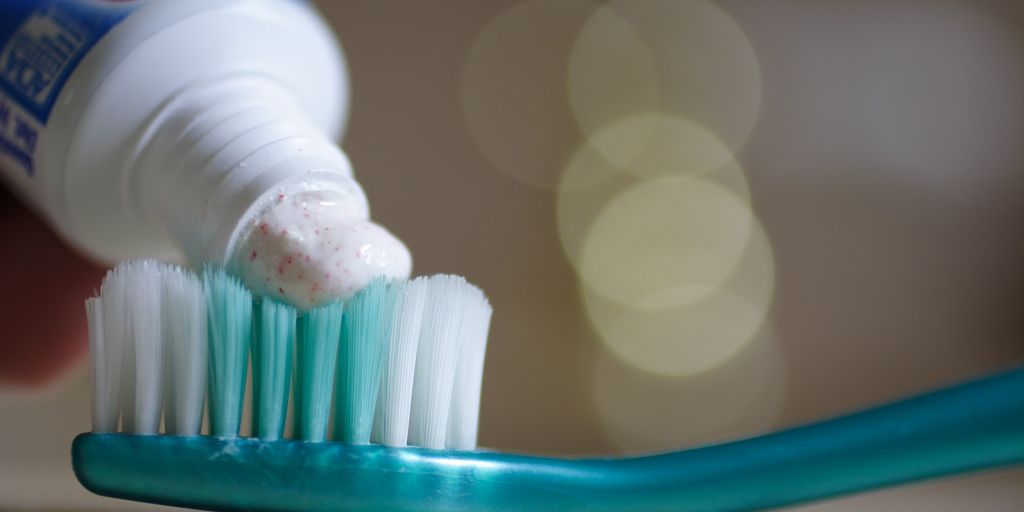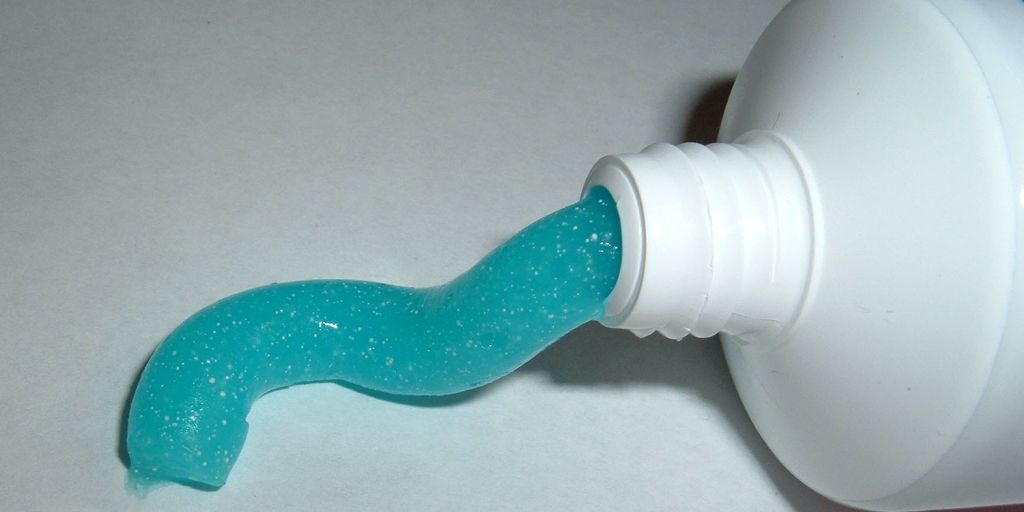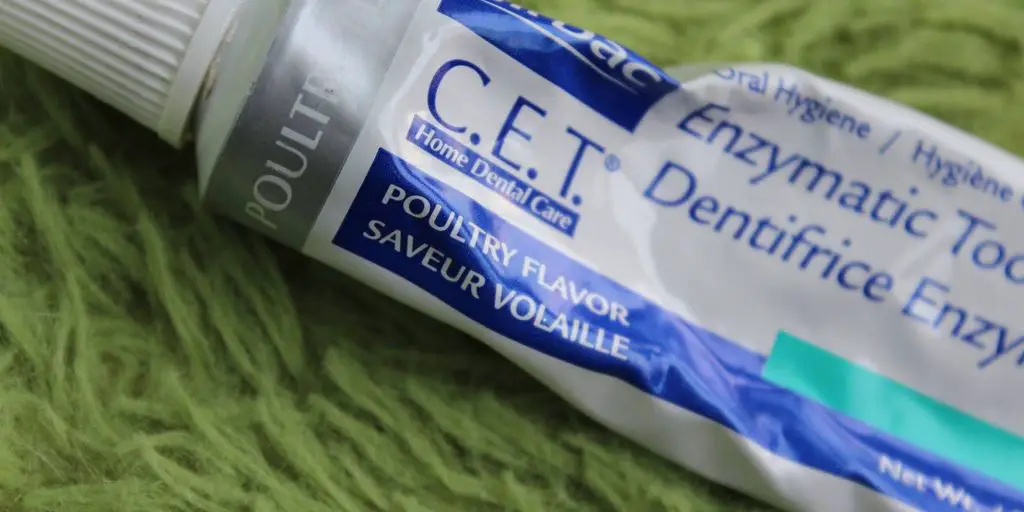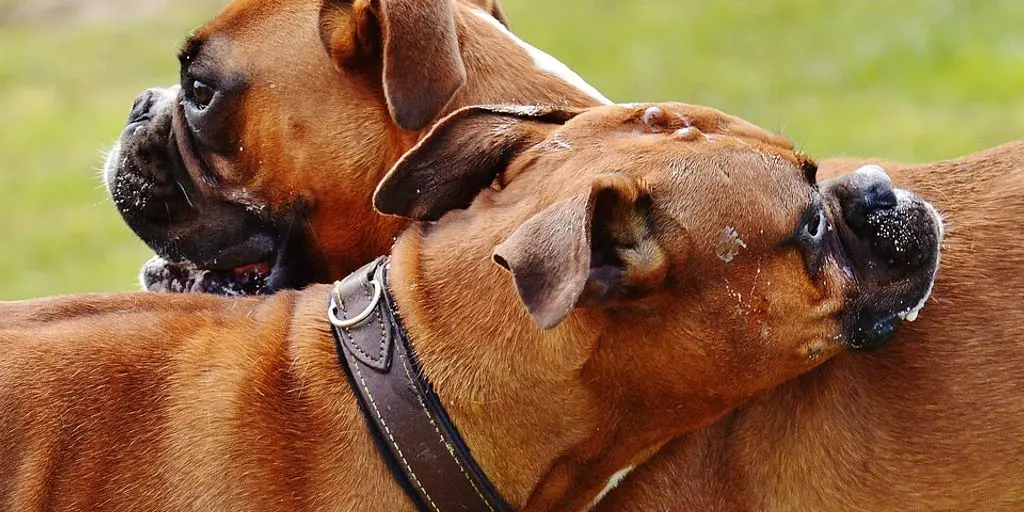Taking care of your dog’s dental health is crucial for their overall well-being. Just like humans, dogs can suffer from dental issues such as plaque buildup, gum disease, and bad breath. Using the right toothpaste, especially natural and homemade options, can make a significant difference in maintaining your dog’s oral hygiene. This article explores the importance of dog toothpaste, common ingredients in commercial products, benefits of natural options, and how to make your own at home.
Key Takeaways
- Regular brushing with dog-specific toothpaste is essential for preventing dental diseases in dogs.
- Natural and homemade dog toothpaste options help avoid harmful chemicals and are better for sensitive dogs.
- Common safe ingredients for homemade dog toothpaste include baking soda, coconut oil, and natural flavorings like mint.
- It’s important to choose the right toothbrush and make the brushing experience enjoyable for your dog.
- Signs that your dog needs dental care include bad breath, discolored teeth, and difficulty eating.
Why Your Dog Needs Toothpaste

Importance of Dental Health
Keeping your dog’s teeth clean is crucial for their overall health. Just like humans, dogs can suffer from plaque buildup and gum disease. Regular brushing helps to break down plaque and destroy bacteria, ensuring your dog’s mouth stays healthy and their breath fresh.
Risks of Ignoring Oral Hygiene
Ignoring your dog’s oral hygiene can lead to serious issues. Tartar buildup can cause tooth decay, making it difficult for your pet to eat. In severe cases, it can even lead to broken or loose teeth. If your dog has bad breath, it might be a sign of underlying dental problems that need attention.
Benefits of Regular Brushing
Brushing your dog’s teeth regularly not only prevents dental issues but also strengthens the bond between you and your pet. It can be a fun and bonding activity that you both enjoy. Plus, their breath will smell fresh and clean, making those slobbery kisses much more pleasant.
Consistent daily tooth brushing and regular oral care are excellent ways to show your pet how much you care about their health.
Common Ingredients in Commercial Dog Toothpaste
When it comes to picking out toothpaste for your dog, it’s crucial to know what’s inside the tube. Reading labels can be just as important for your dog’s dental care as it is for their food. Let’s break down some common ingredients you might find in commercial dog toothpaste.
Safe Ingredients
Many commercial dog toothpastes contain ingredients that are safe and beneficial for your dog’s oral health. Here are a few you might see:
- Enzymes: These help break down plaque and tartar, making it easier to keep your dog’s teeth clean.
- Baking Soda: A mild abrasive that helps scrub away stains without damaging the enamel.
- Coconut Oil: Known for its antibacterial properties, it can help reduce harmful bacteria in your dog’s mouth.
- Herbs and Natural Flavorings: Ingredients like parsley and mint not only freshen breath but are also safe for dogs.
Ingredients to Avoid
Just like with human toothpaste, there are some ingredients in dog toothpaste that you should steer clear of. These can be harmful if ingested or may cause other health issues.
- Sodium Lauryl Sulfate: This detergent can cause mouth sores and is best avoided.
- Propylene Glycol: Found in antifreeze, this ingredient is a big no-no for dogs.
- Artificial Colors and Flavors: These can cause allergic reactions and other health problems.
Understanding Labels
Reading the label on your dog’s toothpaste can be a bit overwhelming, but it’s essential. Look for products that clearly list all their ingredients and avoid those with vague terms like “artificial flavors” or “colorants.” If you’re ever in doubt, your vet can help you determine which ingredients and products are best suited for your pet’s individual needs.
Taking the time to understand what’s in your dog’s toothpaste can make a big difference in their overall health. Always opt for products with natural, safe ingredients to keep your furry friend’s smile bright and healthy.
Benefits of Natural Toothpaste for Dogs

Avoiding Harmful Chemicals
One of the biggest perks of using natural toothpaste for your dog is that you can avoid harmful chemicals. Many commercial dog toothpastes contain artificial additives and dyes that might not be safe for your furry friend. By opting for natural ingredients, you ensure that your dog is only getting the good stuff, like baking soda and coconut oil, which are effective and safe.
Eco-Friendly Options
Natural toothpaste options are often more eco-friendly. They usually come in recyclable packaging and are made from sustainable ingredients. This means you can take care of your dog’s dental health while also being kind to the planet. It’s a win-win!
Better for Sensitive Dogs
If your dog has a sensitive mouth or is prone to allergies, natural toothpaste can be a game-changer. Ingredients like coconut oil and herbs are gentle on the gums and can help reduce inflammation. Plus, you can customize the flavor to suit your dog’s preferences, making brushing time a more enjoyable experience for both of you.
Making your own natural toothpaste at home can be a fun and bonding experience for you and your dog. Plus, it gives you full control over what goes into the product, ensuring it’s both safe and effective.
Essential Ingredients for Homemade Dog Toothpaste
Making your own dog toothpaste is a fantastic way to ensure your furry friend gets the best care without any harmful additives. Here are some key ingredients you’ll need to get started:
Baking Soda
Baking soda is a common ingredient in homemade dog toothpaste. It’s a mild abrasive that helps remove plaque and tartar from your dog’s teeth. Plus, it neutralizes odors, keeping your dog’s breath fresh. Just be sure to use it in moderation, as too much can be harmful.
Coconut Oil
Coconut oil is another staple for DIY dog toothpaste. It’s not only safe for dogs but also has antibacterial properties that can help keep your dog’s mouth clean. Coconut oil also adds a pleasant taste that most dogs love, making the brushing process easier.
Herbs and Natural Flavorings
Adding herbs and natural flavorings can make the toothpaste more appealing to your dog. Options like parsley and mint can help freshen breath, while a bit of cinnamon can add a tasty twist. Always ensure that any herbs or flavorings you use are safe for dogs.
Creating your own homemade dog toothpaste puts you in control. You can avoid abrasive ingredients, artificial flavors, and the risk of harmful bacteria. Using natural ingredients like coconut oil and baking soda can help combat tartar buildup and freshen your dog’s breath, all while ensuring that they’re getting a safe and healthy product.
Simple Homemade Dog Toothpaste Recipes
Making your own dog toothpaste is not only fun but also ensures that your furry friend gets the best care without any harmful chemicals. Here are three easy recipes to get you started.
Basic Baking Soda Recipe
This is a simple and effective recipe that you can whip up in no time.
- 1 tablespoon baking soda
- 1 tablespoon water or broth
Mix these ingredients into a paste and apply a small amount to a dog toothbrush. Brush your dog’s teeth thoroughly, making sure to reach all surfaces.
Coconut Oil and Turmeric Recipe
Coconut oil is great for dogs, and turmeric adds an extra layer of benefits.
- 1 tablespoon coconut oil
- 1 teaspoon turmeric
- A few drops of chicken broth (optional for flavor)
Combine the ingredients until you get a smooth paste. Use this mixture to brush your dog’s teeth, ensuring you cover all areas.
Minty Fresh Recipe
For a fresher breath, try this minty recipe.
- 1 tablespoon baking soda
- 1 tablespoon coconut oil
- A few fresh mint leaves, finely chopped
Blend all the ingredients together until you get a consistent paste. Brush your dog’s teeth with this mixture for a minty fresh finish.
Making homemade dog toothpaste is a great way to ensure your pet’s dental health while avoiding harmful chemicals. Plus, it’s a fun and rewarding activity for both you and your dog!
How to Brush Your Dog’s Teeth
Brushing your dog’s teeth might seem daunting, but it’s essential for their overall health. Choosing the right toothbrush is the first step. You can use a dog-safe toothbrush or even wrap a small piece of gauze around your finger. The key is to ensure it’s comfortable for your dog.
Step-by-Step Brushing Guide
- Start by letting your dog get used to the toothbrush or gauze. Let them sniff and lick it to become familiar with it.
- Apply a small amount of dog-safe toothpaste. Never use human toothpaste as it can be harmful to dogs.
- Gently lift your dog’s lips to expose their teeth. Begin brushing in a circular motion, focusing on the gum line.
- Be sure to brush the back molars, as these are often neglected but crucial for preventing plaque buildup.
- Praise your dog throughout the process to keep them calm and make the experience positive.
Tips for Making Brushing Fun
- Use a flavored toothpaste that your dog enjoys. This can make the experience more like a treat than a chore.
- Incorporate brushing into your daily routine, perhaps after a walk or before bedtime.
- If your dog is particularly anxious, try giving them a calming remedy about thirty minutes before brushing.
Remember, the ultimate guide to the best treats for chihuahuas includes tips on dental chews, homemade treats, store-bought treats, seasonal treats, and DIY Kong stuffing ideas for chihuahuas. This can be a great way to reward your dog after a successful brushing session.
Signs Your Dog Needs Dental Care

Bad Breath
One of the earliest signs that your dog might need dental care is bad breath. While it’s normal for dogs to have a bit of an odor, a particularly foul smell can indicate periodontal disease. If your dog’s breath makes you want to keep them at arm’s length, it’s time to take action.
Discolored Teeth
Changes in the color of your dog’s teeth can be a red flag. Healthy teeth should be white, so if you notice yellow or brown stains, it could be a sign of plaque buildup or tartar. Regular brushing can help prevent these issues, but if discoloration persists, a vet visit is in order.
Difficulty Eating
If your dog is having trouble eating, it might be due to dental pain. Watch for signs like chewing on one side of the mouth, dropping food, or refusing to eat altogether. These behaviors can indicate that your dog is experiencing discomfort and may need dental care.
Vet bills can mount up when dealing with these serious issues. By maintaining your dog’s dental health, you can avoid astronomical costs.
Ignoring these signs can lead to more severe problems, including painful infections and tooth loss. Early detection and regular dental care are key to keeping your dog’s mouth healthy.
Alternative Dental Care Options
If brushing your dog’s teeth feels like a hassle, don’t worry! There are several effective alternatives to keep your pup’s teeth clean and healthy. Here are some options you can consider:
Dental Chews
Dental chews are a fantastic way to help maintain your dog’s oral hygiene. These chews are designed to reduce plaque and tartar buildup while freshening your dog’s breath. Plus, most dogs absolutely love them! Just make sure to choose chews that are appropriate for your dog’s size and chewing habits.
Professional Cleanings
Sometimes, it’s best to leave it to the pros. Regular professional cleanings by your vet can ensure that your dog’s teeth are in top shape. Vets have the tools and expertise to clean below the gumline, where plaque and tartar can hide. It’s a bit of an investment, but it’s worth it for your dog’s health.
Natural Dental Sprays
Natural dental sprays can be a great addition to your dog’s oral care routine. These sprays often contain ingredients like aloe vera and peppermint oil, which can help reduce bacteria and freshen breath. Simply spray it into your dog’s mouth or onto their gums for an easy and quick solution.
Today, I’m gonna show you 11 simple ways to clean dog teeth without brushing. Cause everyone wants to freshen their dog’s breath and remove plaque & tartar!
Frequently Asked Questions About Dog Toothpaste
Can I Use Human Toothpaste?
Short answer: No! Human toothpaste contains ingredients that can be harmful to dogs. Unlike us, dogs don’t spit out their toothpaste, which means they end up swallowing it. Ingredients like fluoride and foaming agents are safe for humans in small doses but can be dangerous for dogs.
How Often Should I Brush My Dog’s Teeth?
Ideally, you should brush your dog’s teeth daily. If that’s not possible, aim for at least 3-4 times a week. Regular brushing helps prevent plaque buildup and keeps your dog’s breath fresh.
What If My Dog Hates Brushing?
If your dog isn’t a fan of brushing, try to make it a fun and positive experience. Use treats and lots of praise. You can also start slowly, letting your dog get used to the toothbrush and toothpaste before actually brushing. Dental chews and toys can also help maintain oral hygiene if brushing is a no-go.
Remember, keeping your dog’s teeth clean is crucial for their overall health. Ignoring it can lead to serious dental issues down the line.
DIY Toothpaste Storage and Shelf Life
Proper Storage Tips
When it comes to storing your homemade dog toothpaste, keeping it fresh is key. Always store it in an airtight glass container to prevent any contamination. Make sure to keep it in a temperature-controlled environment, away from very warm areas. This helps maintain its effectiveness and prevents spoilage.
How Long Does Homemade Toothpaste Last?
Homemade dog toothpaste can last a few months if stored properly. However, it’s always a good idea to use your best judgment before each use. If you notice any changes in color, texture, or smell, it’s best to discard it. For longer shelf life, you can use a clean popsicle stick to scoop out the toothpaste, ensuring no water gets into the jar.
Signs of Spoilage
It’s important to be aware of the signs that your homemade dog toothpaste has gone bad. Look out for:
- Changes in color
- Unpleasant odor
- Separation of ingredients
If you notice any of these signs, it’s time to make a fresh batch. Keeping an eye on these indicators will ensure your dog’s dental care remains effective and safe.
Conclusion
Taking care of your dog’s dental health doesn’t have to be a chore. With natural and homemade toothpaste options, you can ensure your furry friend’s teeth stay clean and healthy without the worry of harmful chemicals. Plus, making your own toothpaste can be a fun and rewarding experience that strengthens the bond between you and your dog. So why not give it a try? Your pup will thank you with a bright, happy smile!
Frequently Asked Questions
Can I use human toothpaste on my dog?
No, human toothpaste contains ingredients like fluoride and xylitol that are toxic to dogs. Always use toothpaste specifically formulated for dogs.
How often should I brush my dog’s teeth?
It is recommended to brush your dog’s teeth at least 2-3 times a week. Daily brushing is ideal for maintaining optimal dental health.
What if my dog hates brushing?
If your dog dislikes brushing, start slowly by letting them get used to the toothbrush and toothpaste. Use positive reinforcement and rewards. You can also try alternative dental care options like dental chews or professional cleanings.
What ingredients should I avoid in dog toothpaste?
Avoid ingredients like fluoride, xylitol, artificial colors, and preservatives in dog toothpaste. These can be harmful to your dog’s health.
Are there natural toothpaste options for dogs?
Yes, there are natural toothpaste options for dogs that use ingredients like baking soda, coconut oil, and natural flavorings. You can also make your own homemade dog toothpaste using safe and natural ingredients.
How do I store homemade dog toothpaste?
Store homemade dog toothpaste in an airtight container in the refrigerator. This helps to keep it fresh and extends its shelf life.
Can I use baking soda to brush my dog’s teeth?
Yes, baking soda can be used as an ingredient in homemade dog toothpaste. It helps to break down plaque and neutralize odors, keeping your dog’s breath fresh.
What are the signs that my dog needs dental care?
Signs that your dog needs dental care include bad breath, discolored teeth, difficulty eating, excessive drooling, and swollen or bleeding gums. Regular dental check-ups with a veterinarian are also important.



